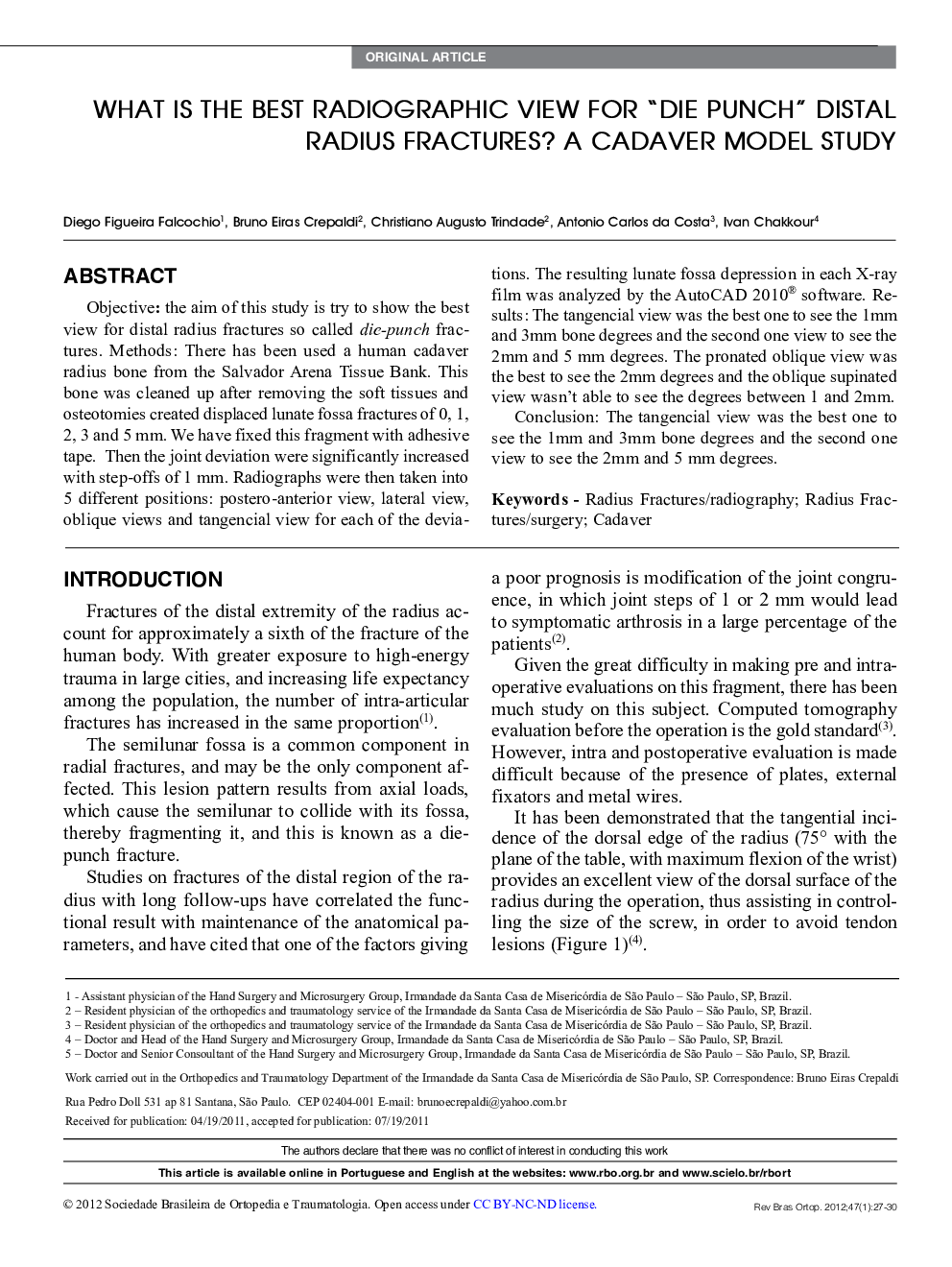| Article ID | Journal | Published Year | Pages | File Type |
|---|---|---|---|---|
| 2718421 | Revista Brasileira de Ortopedia (English Edition) | 2012 | 4 Pages |
ABSTRACTObjective: the aim of this study is try to show the best view for distal radius fractures so called die-punch fractures. Methods: There has been used a human cadaver radius bone from the Salvador Arena Tissue Bank. This bone was cleaned up after removing the soft tissues and osteotomies created displaced lunate fossa fractures of 0, 1, 2, 3 and 5 mm. We have fixed this fragment with adhesive tape. Then the joint deviation were significantly increased with step-offs of 1 mm. Radiographs were then taken into 5 different positions: postero-anterior view, lateral view, oblique views and tangencial view for each of the deviations. The resulting lunate fossa depression in each X-ray film was analyzed by the AutoCAD 2010® software. Results: The tangencial view was the best one to see the 1mm and 3mm bone degrees and the second one view to see the 2mm and 5 mm degrees. The pronated oblique view was the best to see the 2mm degrees and the oblique supinated view wasn't able to see the degrees between 1 and 2mm.Conclusion: The tangencial view was the best one to see the 1mm and 3mm bone degrees and the second one view to see the 2mm and 5 mm degrees.
